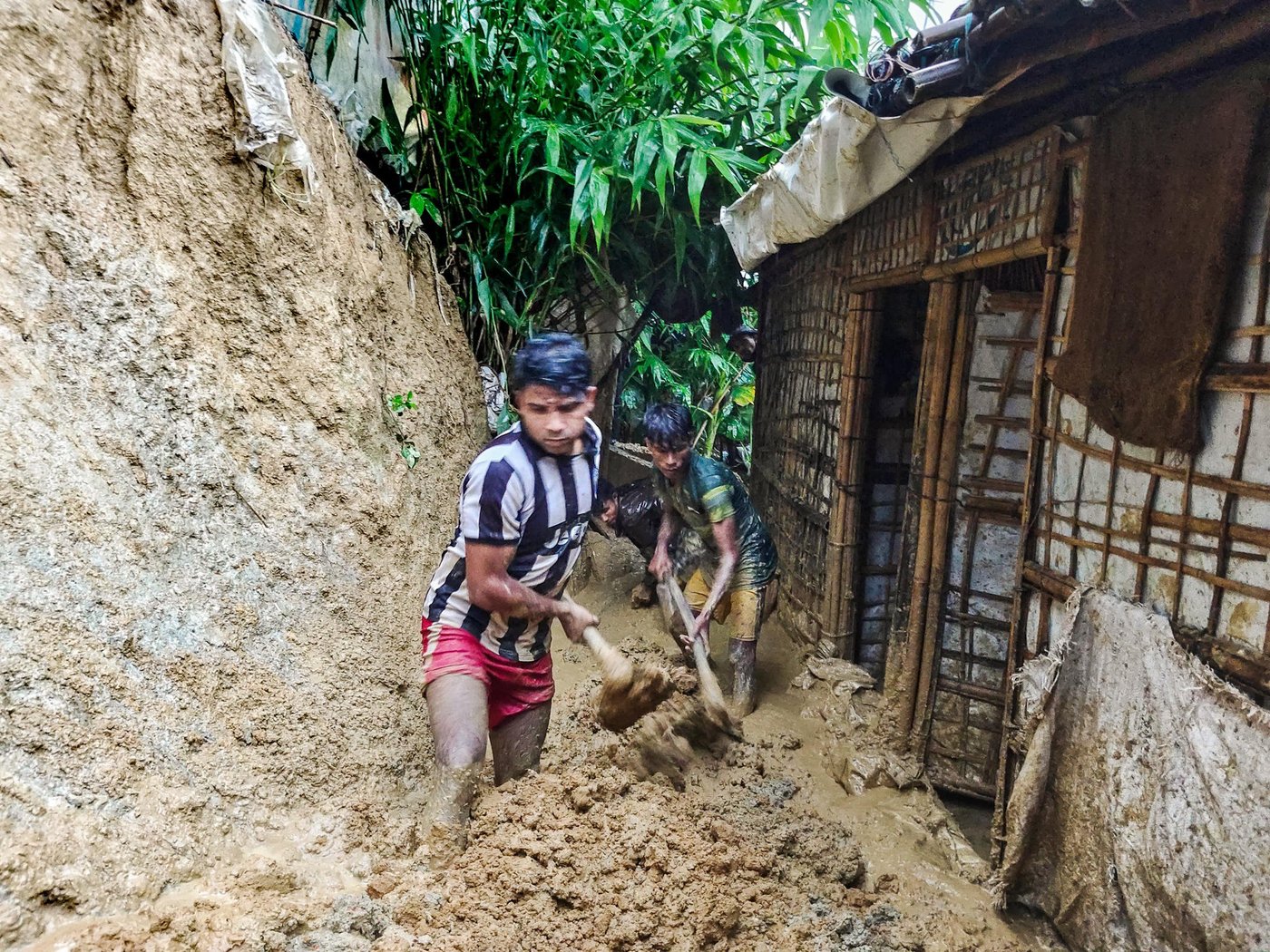For five years, the Norwegian Refugee Council (NRC) has been supporting the Rohingya people, often during crisis situations. On the ground within hours, we have coordinated rapid assessments, and distributed food, fresh water and emergency aid. We continue to advocate for long-term, sustainable solutions for the Rohingya people, who are living from one emergency to the next.
In March, a massive fire in the camp killed at least 15 refugees and injured over 560. A few months later in July, torrential rain and strong winds caused floods and landslides. The destruction left thousands homeless and 19 people dead, including three children.
During the catastrophic flooding, families watched as thousands of shelters were damaged or destroyed. Many shelters were simply carried away by the rushing floodwaters. It was a traumatic experience for everyone, especially the 11,000 refugees who were displaced.
As the flood waters rose, NRC worked with two Rohingya photographers, Yassin and Zia, who live in the refugee camps in Cox’s Bazar, to document the crisis.
Here’s what they witnessed.
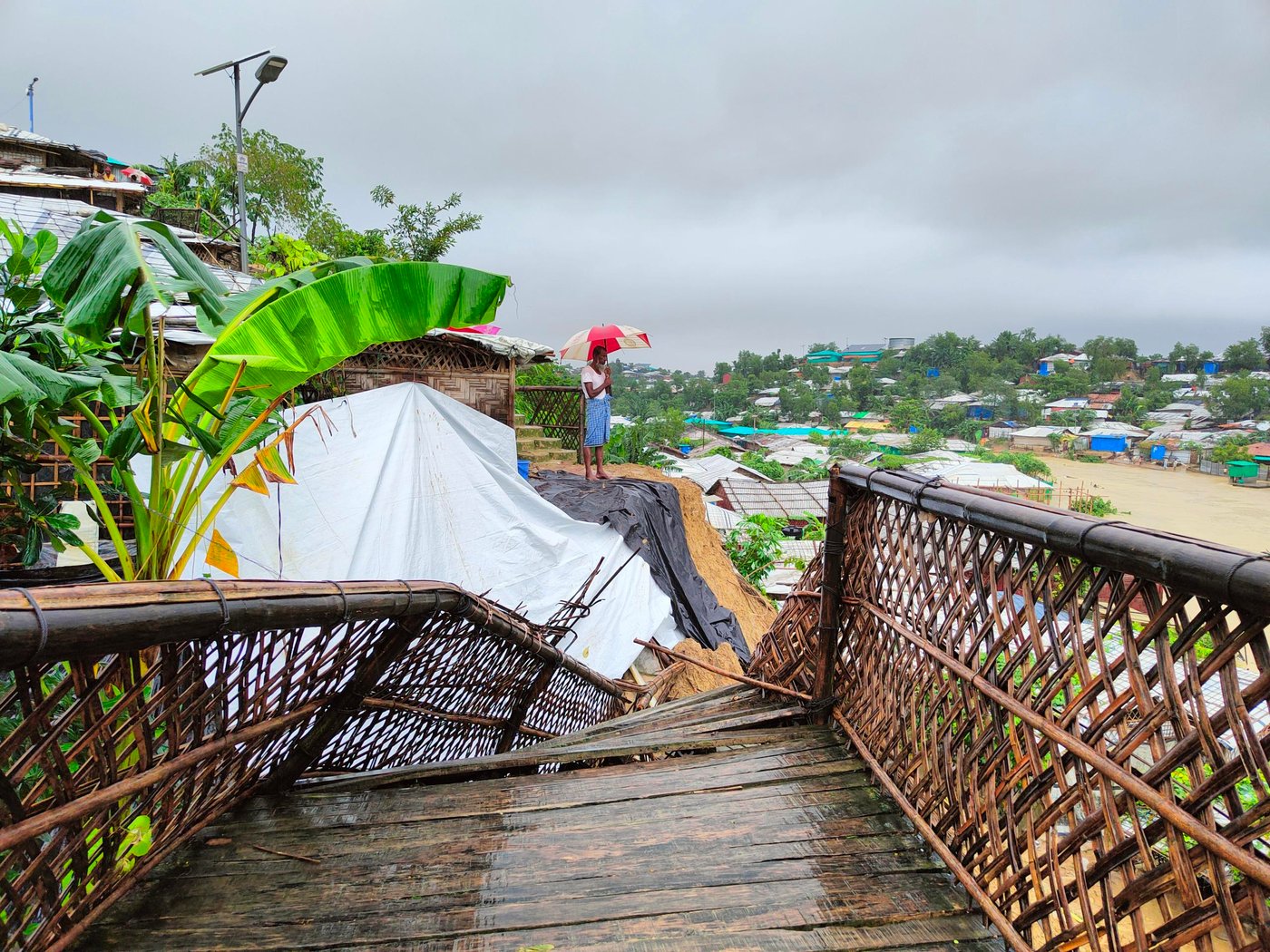
“A big loss”
Zia: Roads were missing. Mud, damaged bamboo and shreds of shelters were everywhere. The camp is hilly, and most shelters are positioned on the edge with a high landslide risk. So many shelters were destroyed.
Yassin: Shelters built on low ground were swept away by the heavy flow of water.

Zia: We are accustomed to the dangers of seasonal monsoons, but we had never experienced such a disastrous event. Hundreds of people were in the hills waiting to go back to their original shelters that were submerged in the water.
Yassin: The destruction left refugees feeling hopeless. It was an unexpected, huge disaster and a big loss for us all.
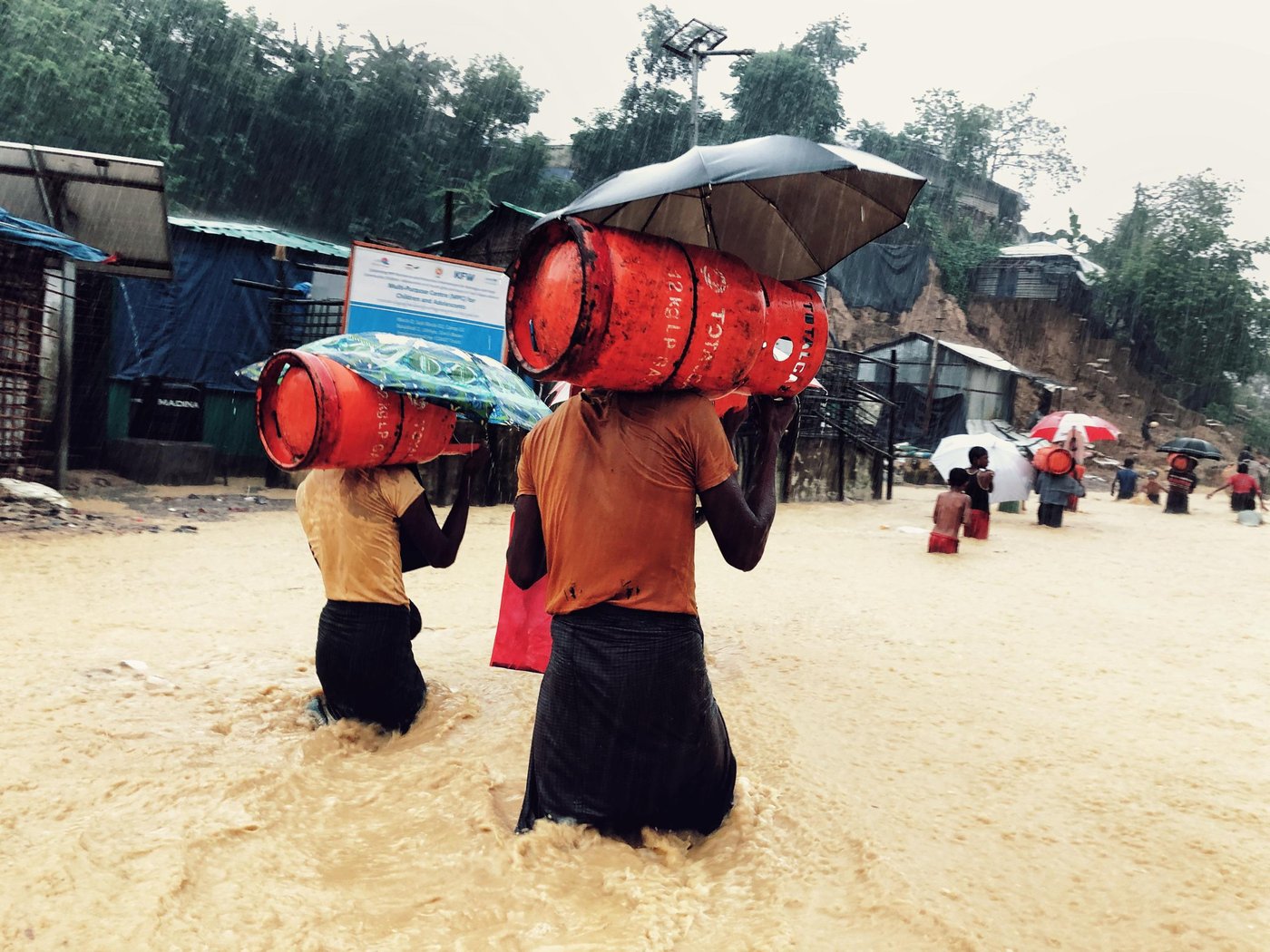
Vulnerable groups affected most
For vulnerable groups such as children, older people, and people with illnesses or disabilities, the impact has been severe.
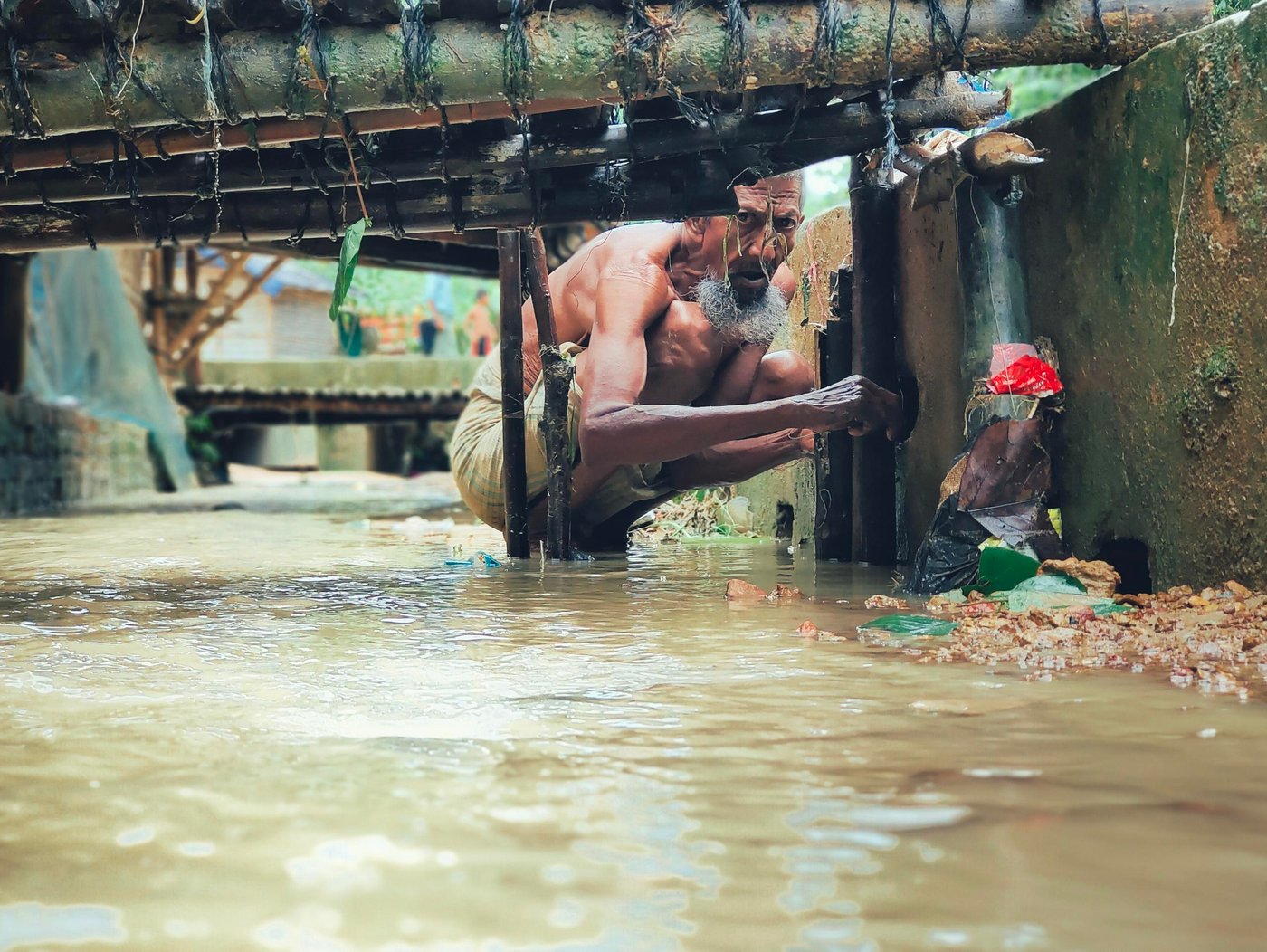
Yassin: I found a 107-year-old woman, disabled and deaf. She doesn’t have anyone to take care of her, and her shelter was totally destroyed, so she was living in a relative’s shelter. She was so devastated and helpless. She was just keeping her faith that she would be saved from the disaster.
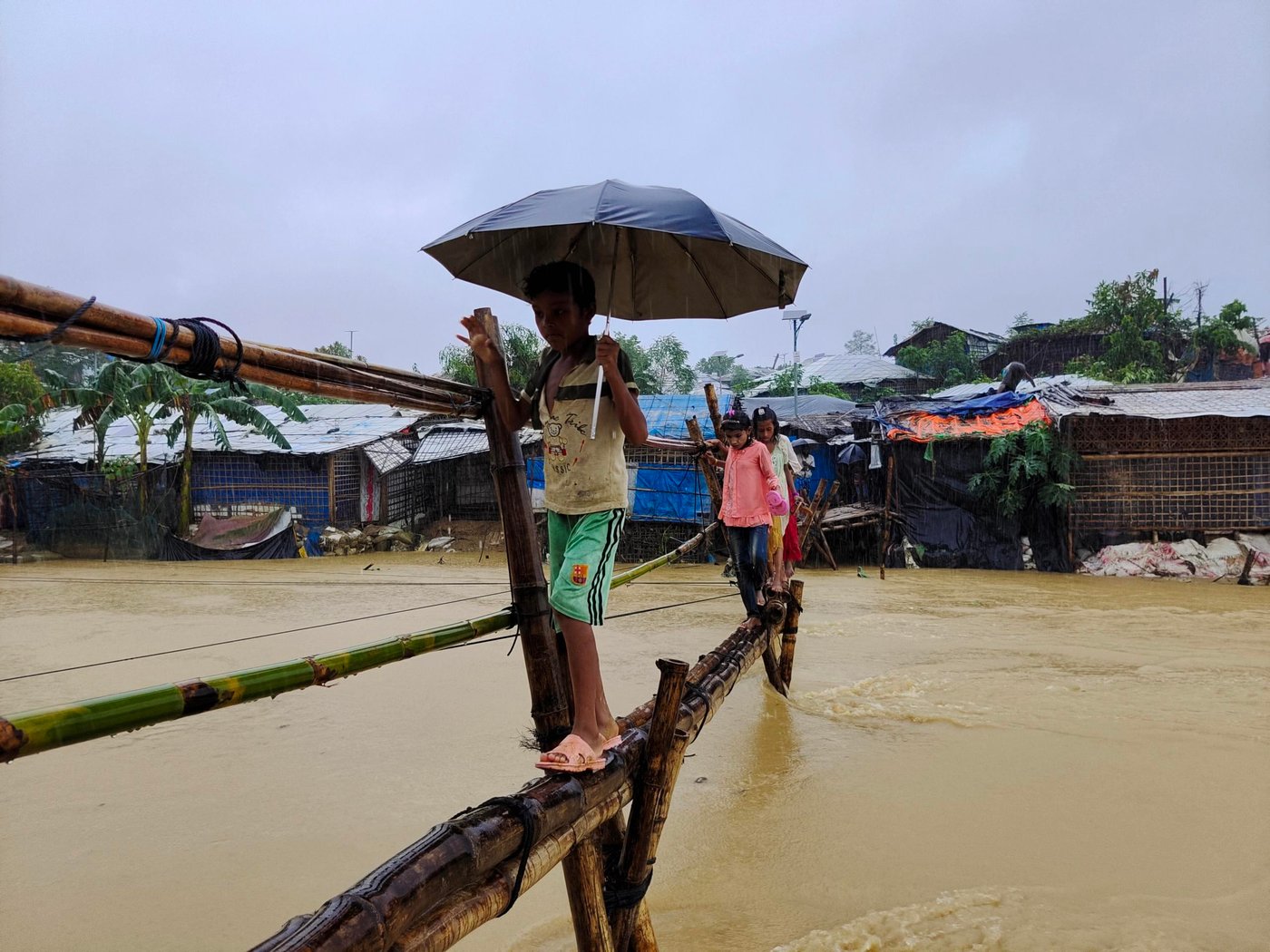
Children, youth and adolescents do not have access to formal education and skill building programmes. With limited access to healthcare, many refugees are suffering critical and chronic diseases, and mental health issues are rampant.
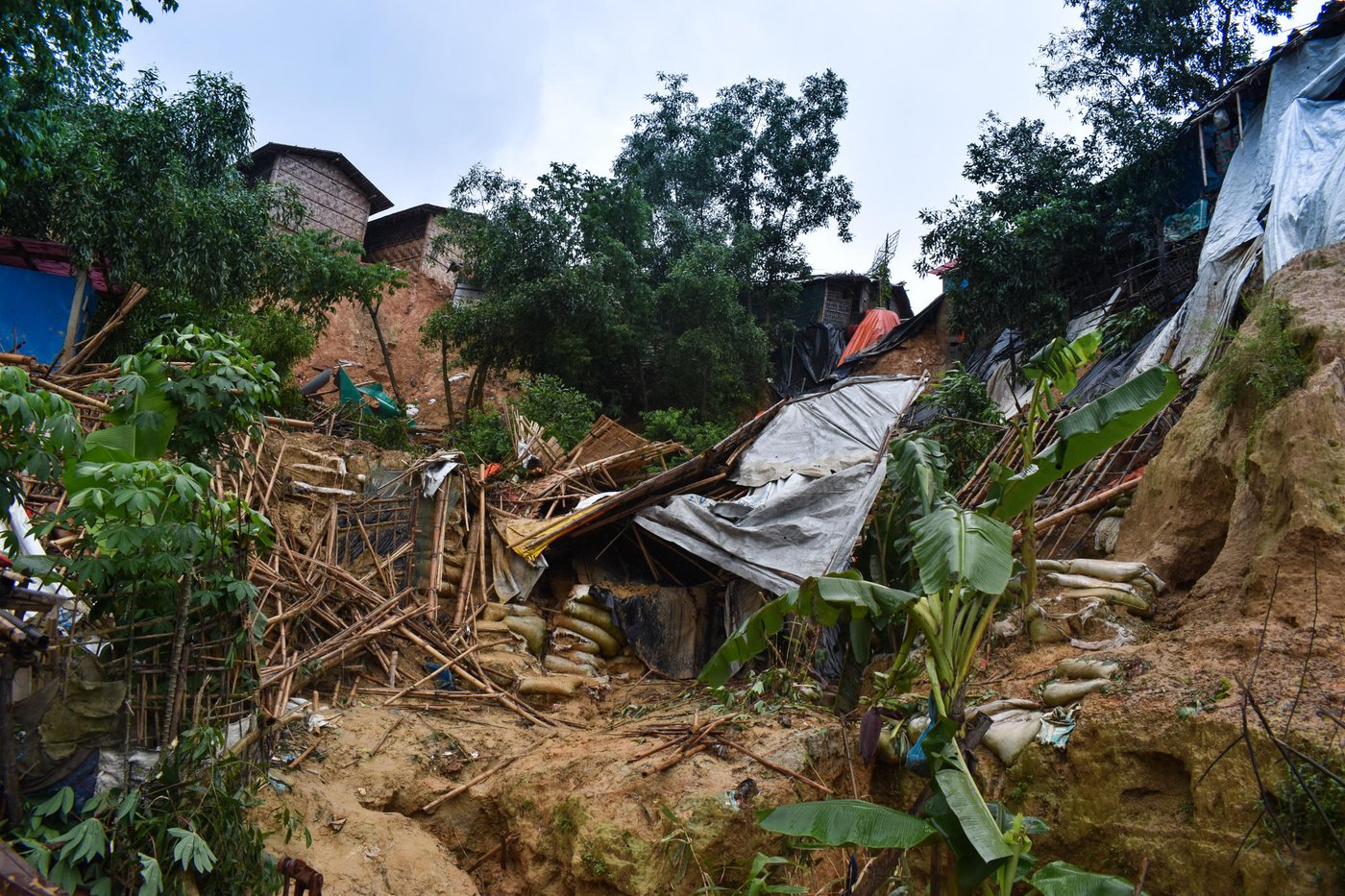
Movement seriously limited
Zia: I faced many difficulties travelling between camps, because the disaster seriously limited movement. Most roads, stairs and bridges were damaged.
Some bridges over canals are still not repaired. People must swim or walk in contaminated water to move between camps. Some NGO facilities, including water, sanitation and hygiene (WASH) facilities, are damaged.
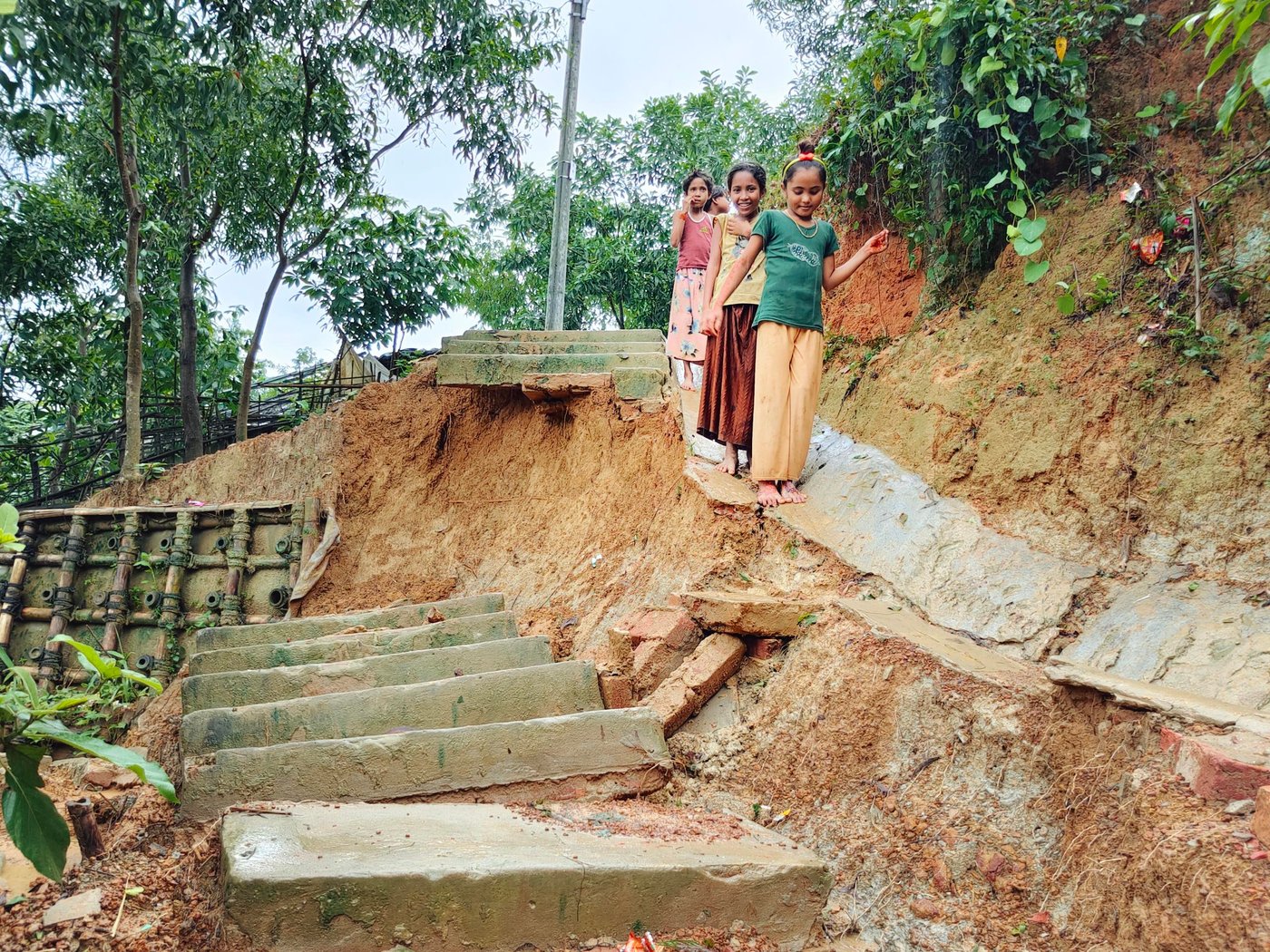
Looking to the future
Yassin: People are deeply concerned about their own futures – and the possibility of future destruction. They are praying a disaster like this will not happen again.
Zia: NRC and other humanitarian organisations are responding to make things normal as quickly as possible.
For example, a retaining wall is under construction to help protect against landslides in the future. Roads and WASH facilities are being repaired and rebuilt, and shelter materials, food and household items are being provided to affected families.
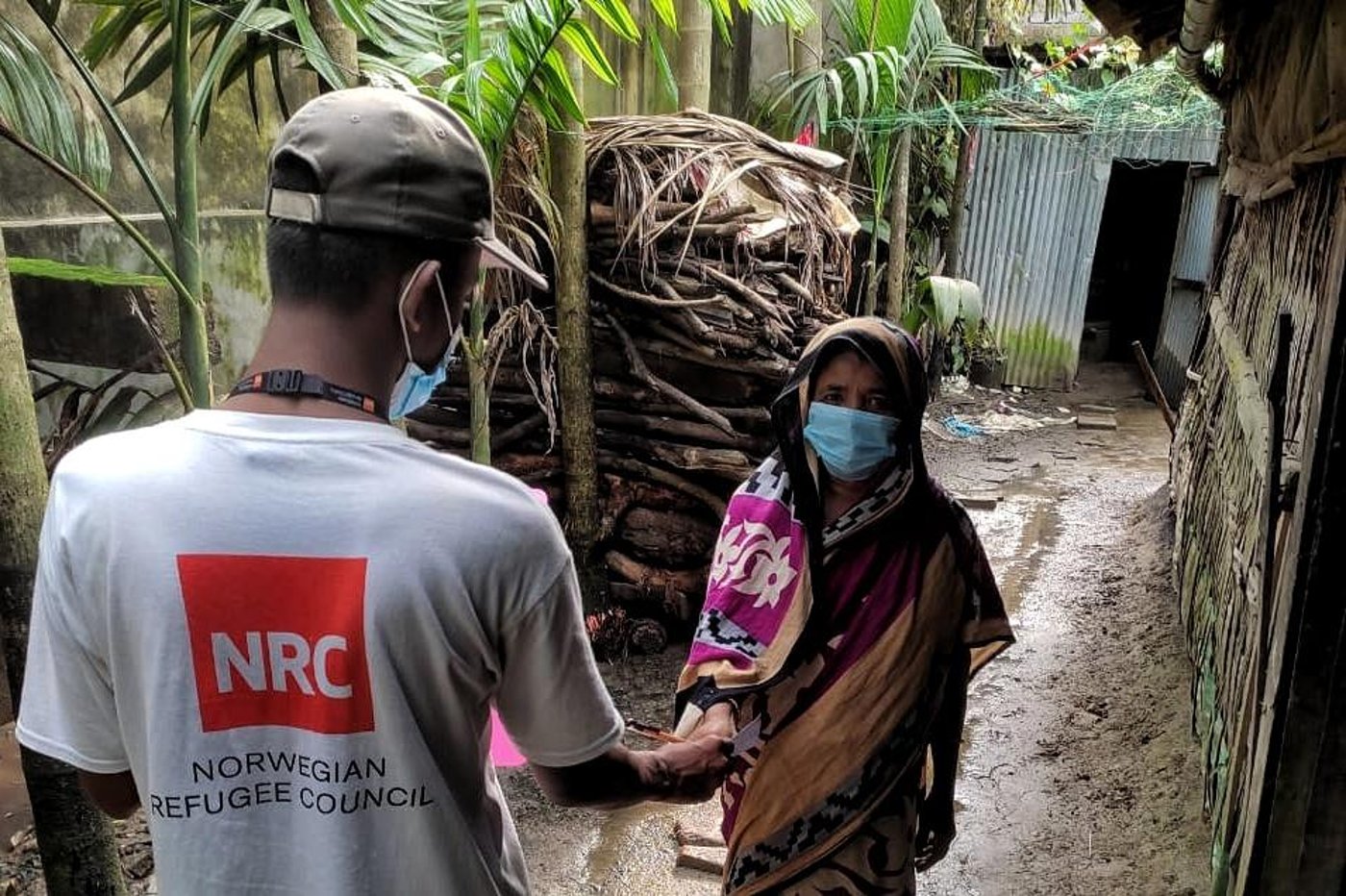
NRC at the heart of the response
When a disaster strikes, NRC supports with both emergency aid and a long-term response to help communities repair and rebuild.
Our teams were deployed within the first hours of both the 22 March fire and the 26 July floods, assessing needs, documenting damage, and providing rapid relief through the distribution of fresh water, dry food and shelter material. In the flood response alone, thanks in part to generous support by Norwegians, we supported 23,270 people – both refugees and members of the host community.
Our long-term response is helping communities recover from disasters and prepare for future weather events – removing mud and debris, providing essential water and sanitation services, and restoring homes. With an eye towards sustainability, we are also working with partners to recycle plastic waste into eco-friendly shelter material.
Restoring a normal rhythm in the community helps people recover and move forward. We help schools reopen safely, conduct community awareness sessions on disaster planning, and provide information counselling for people who have lost important documentation. In 2021, we assisted 153,101 refugees and host Bangladeshis in Cox’s Bazar.
“NRC not only took initiative to launch the emergency response but is helping to make things better than before,” says Zia.


